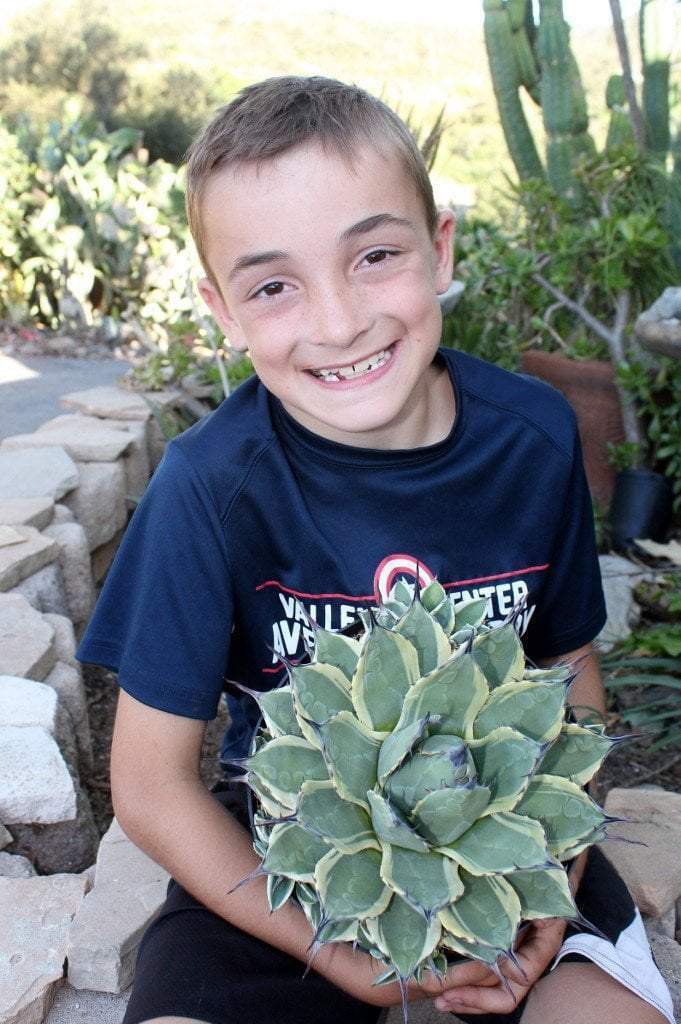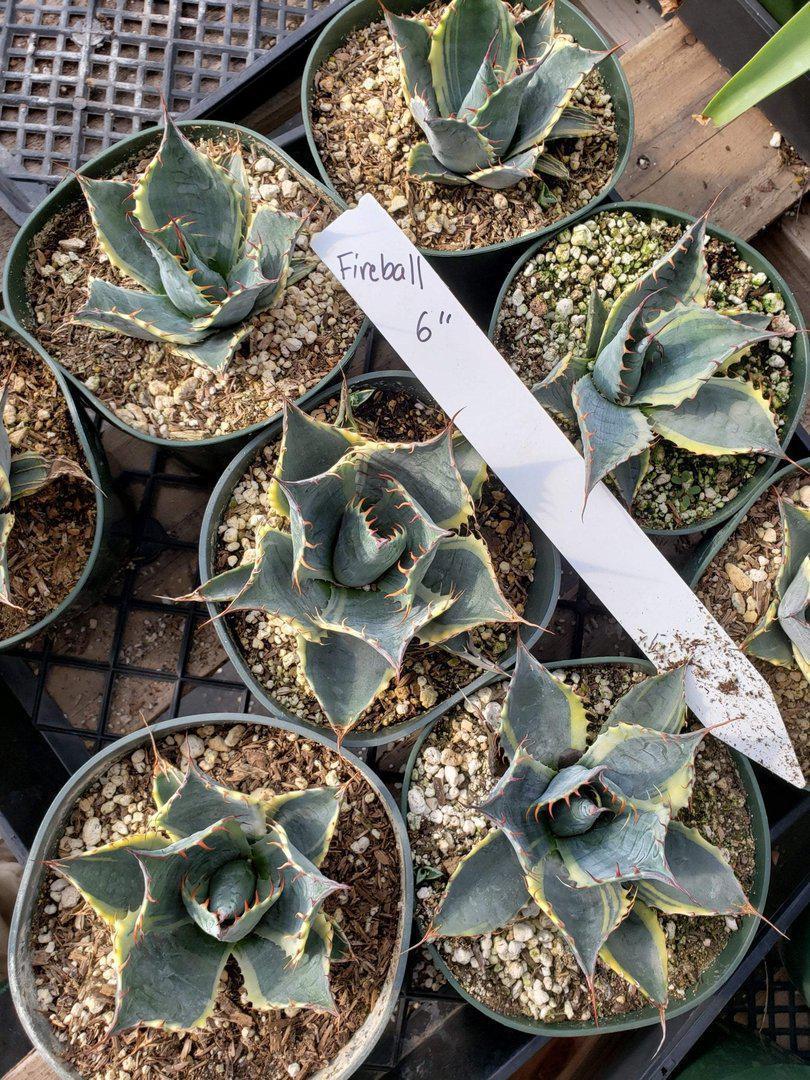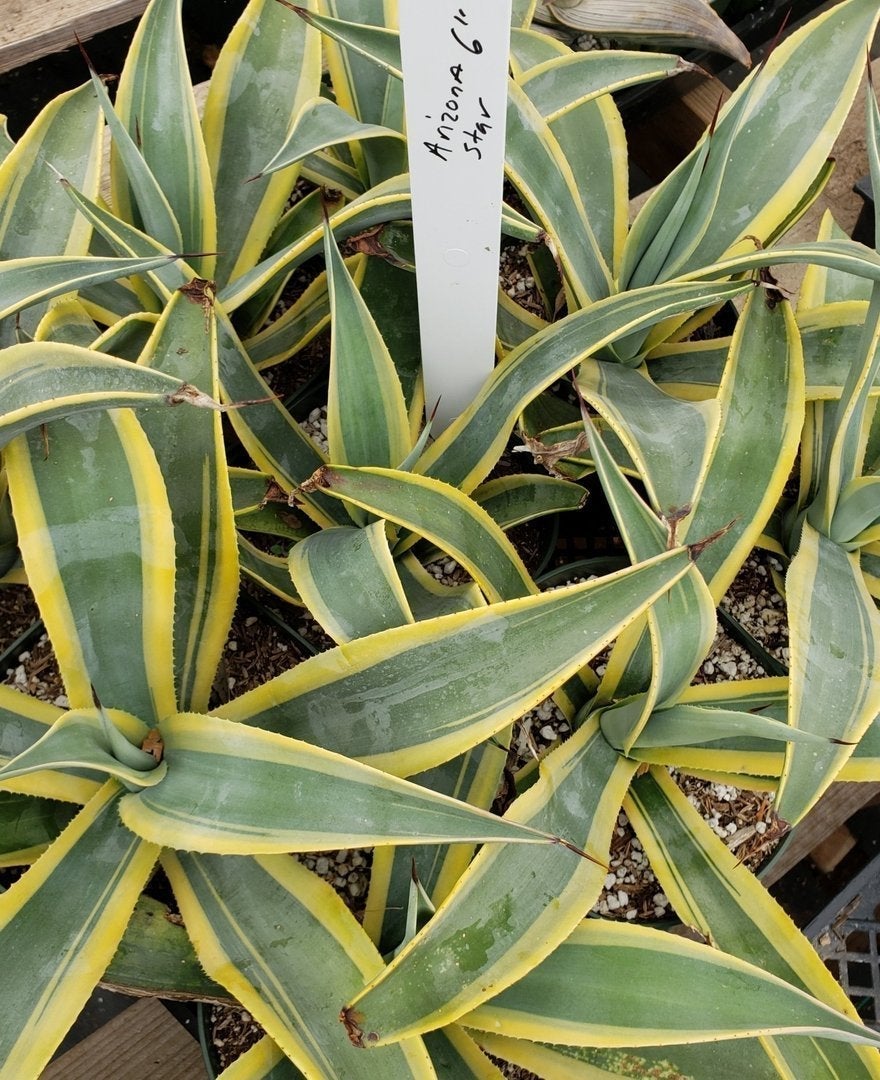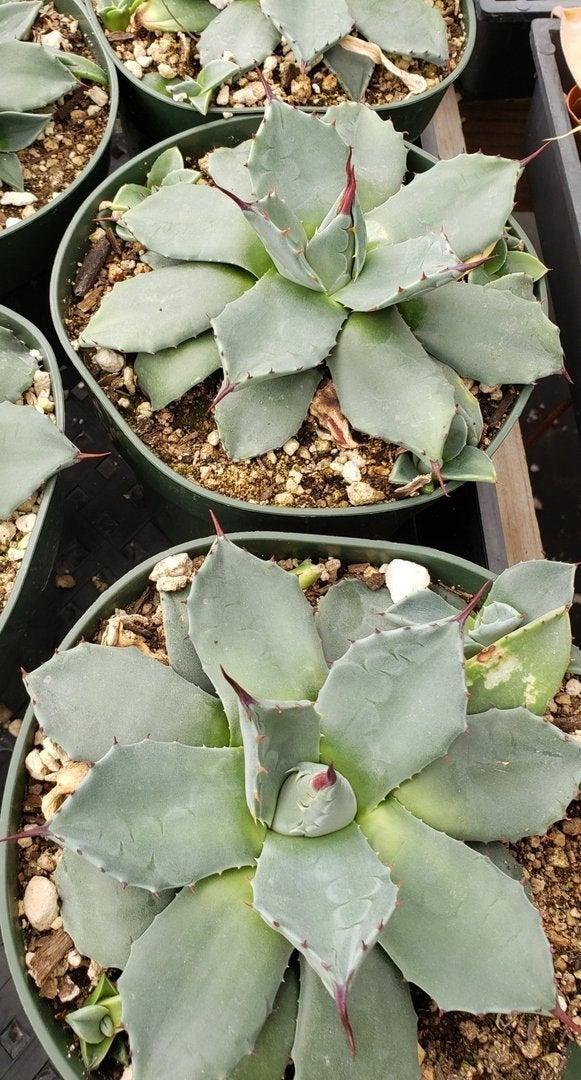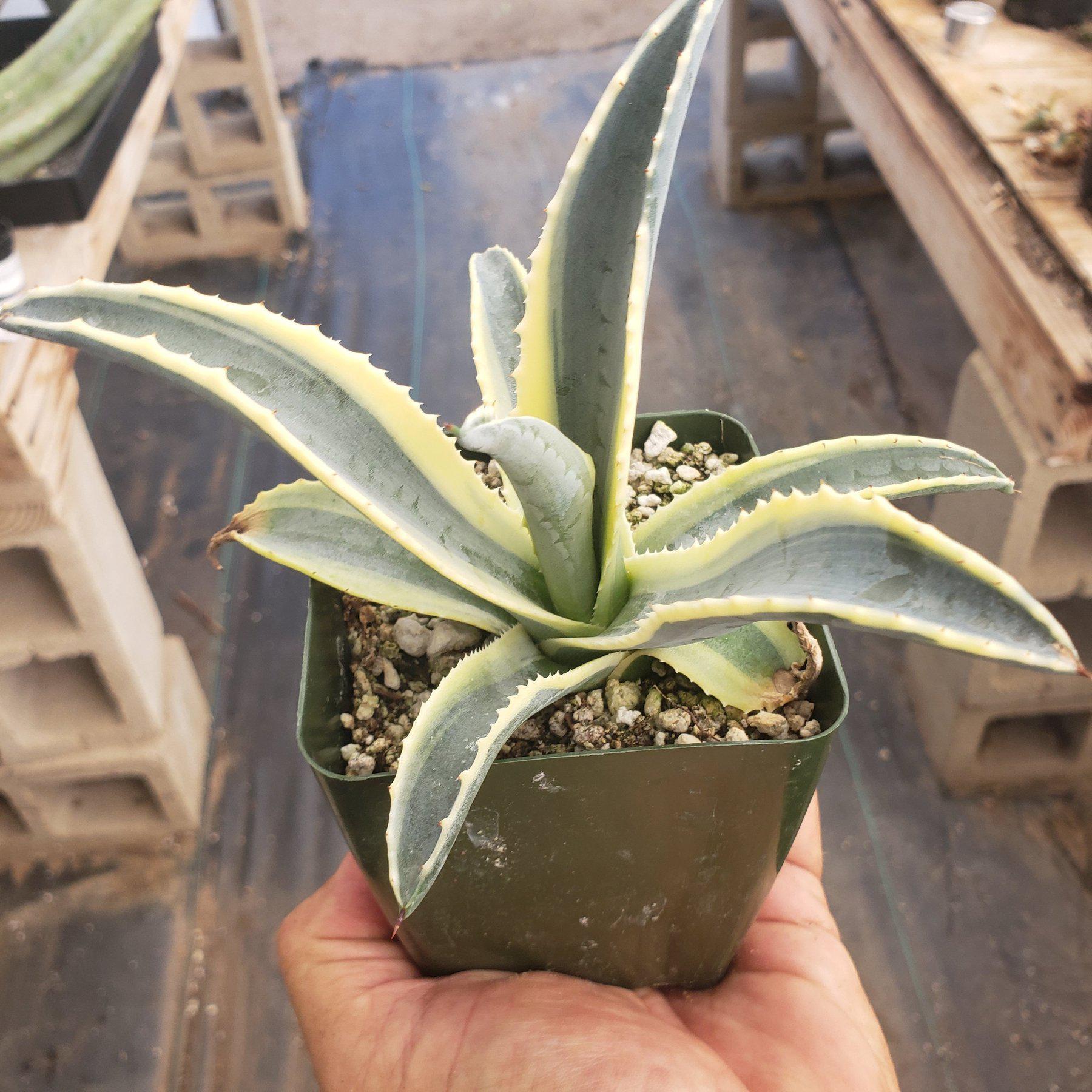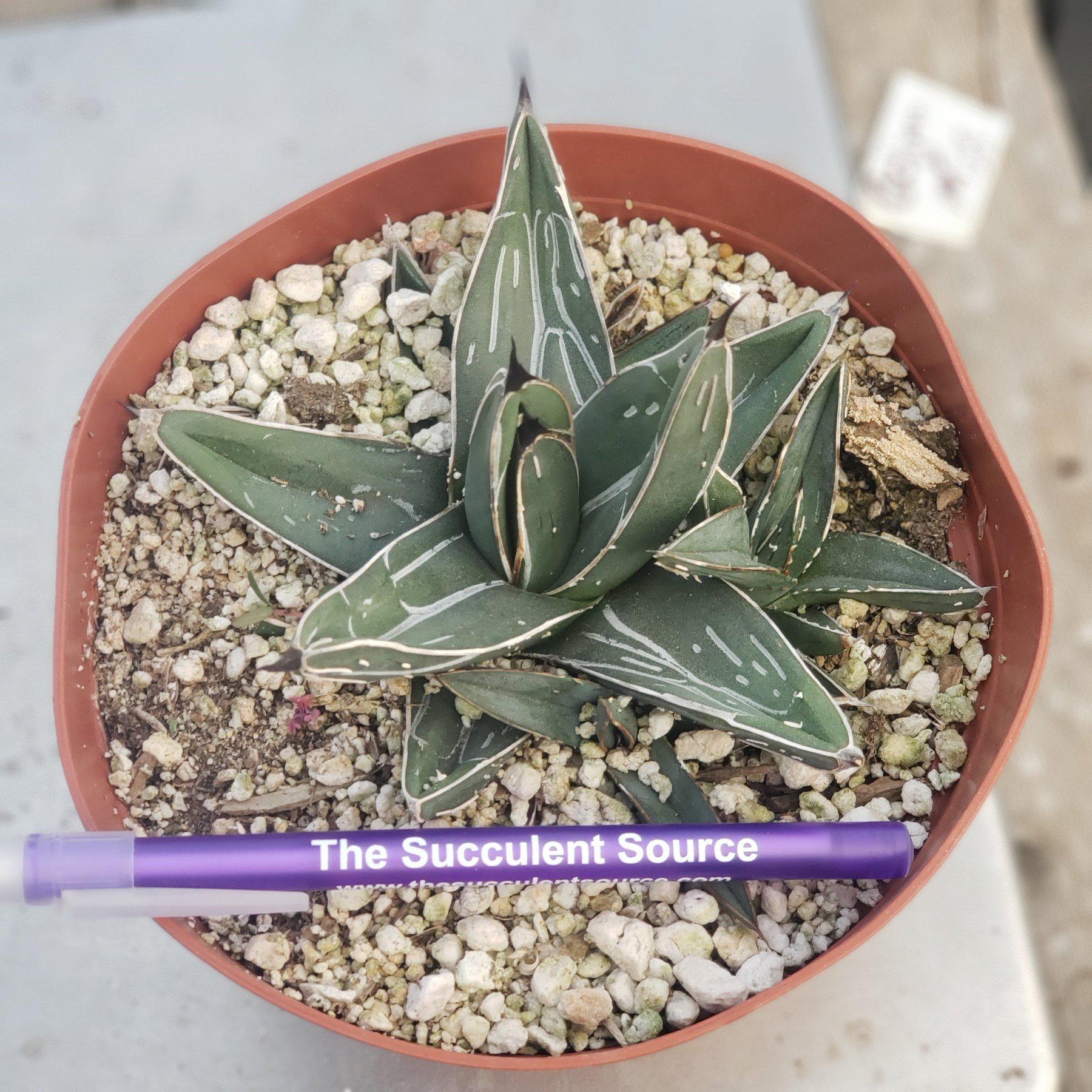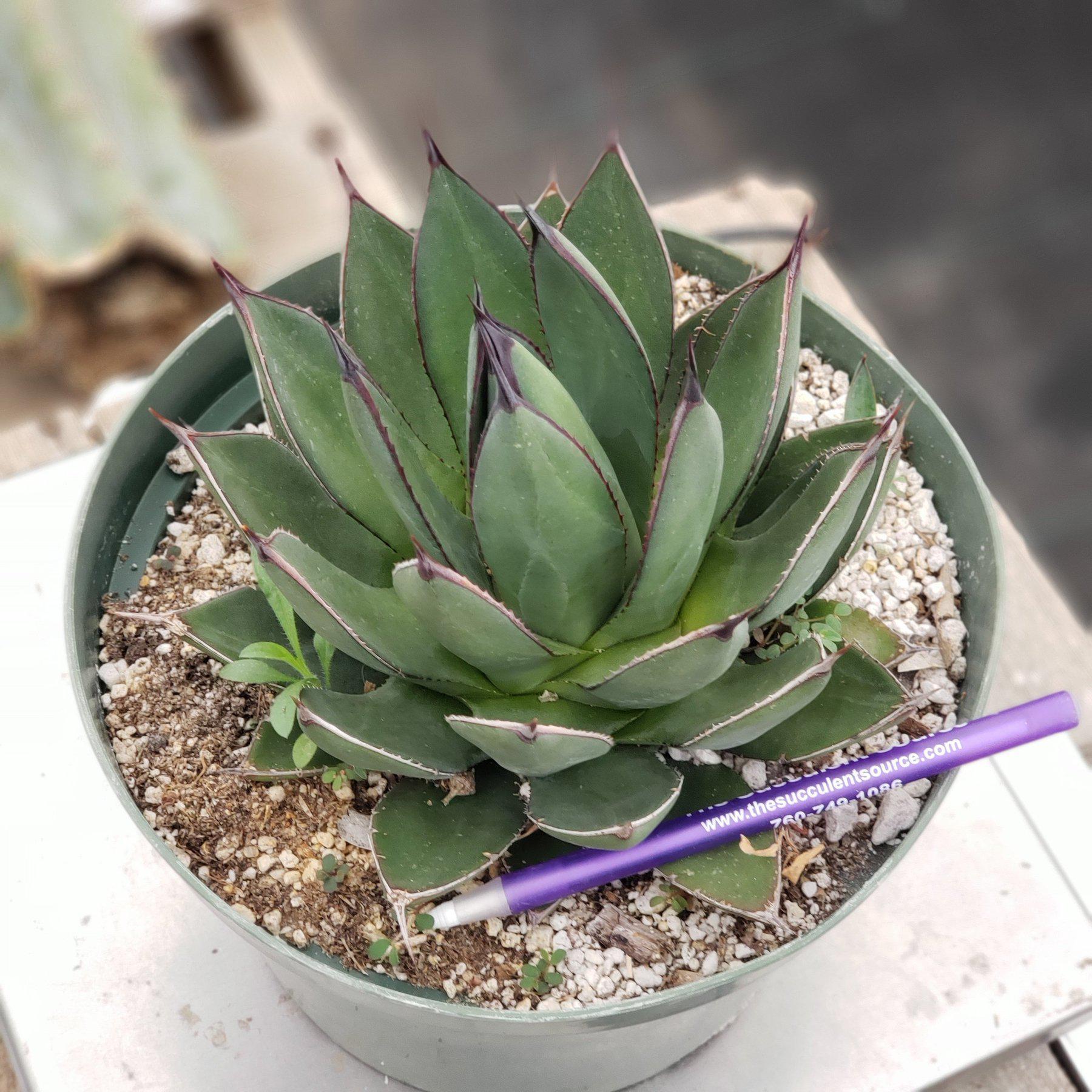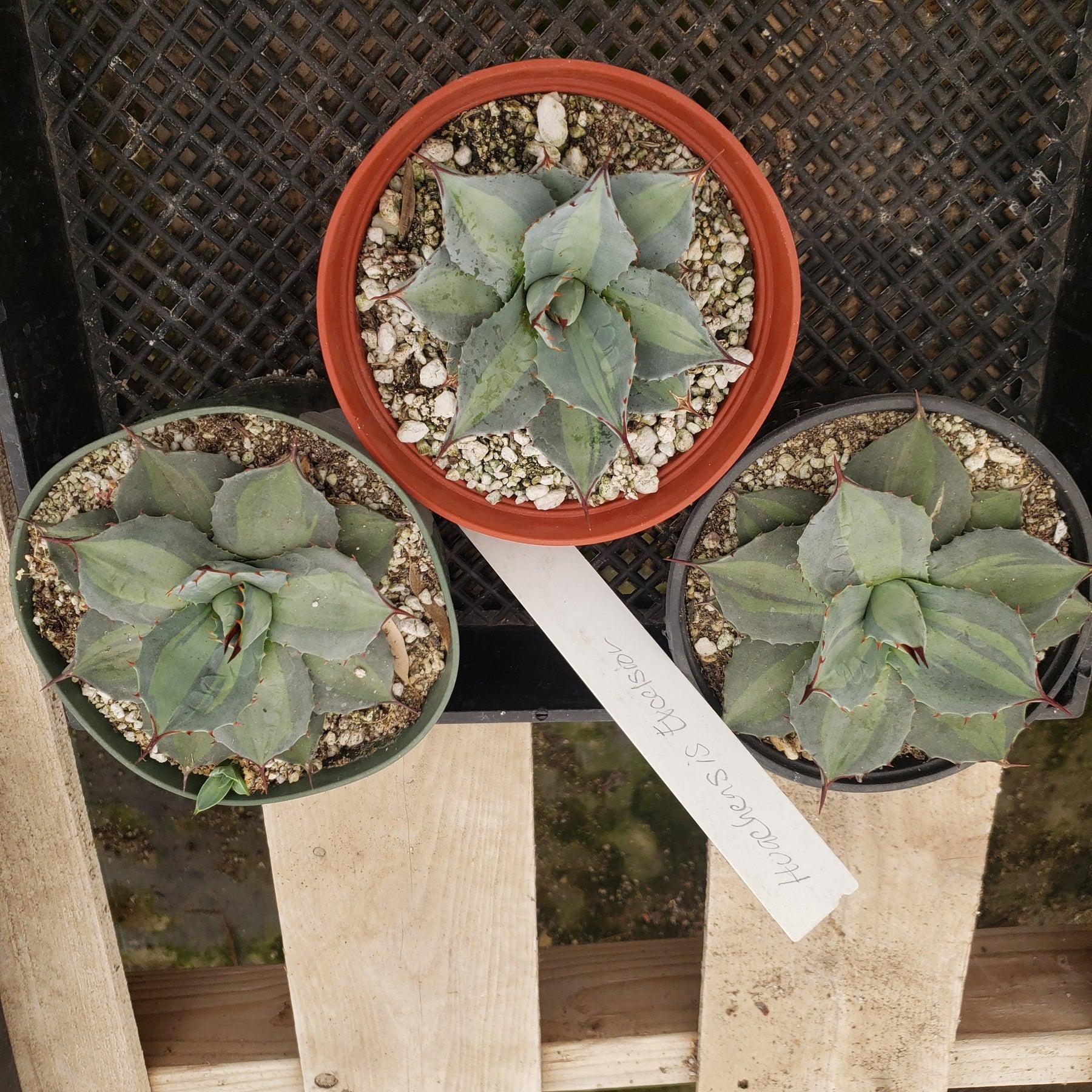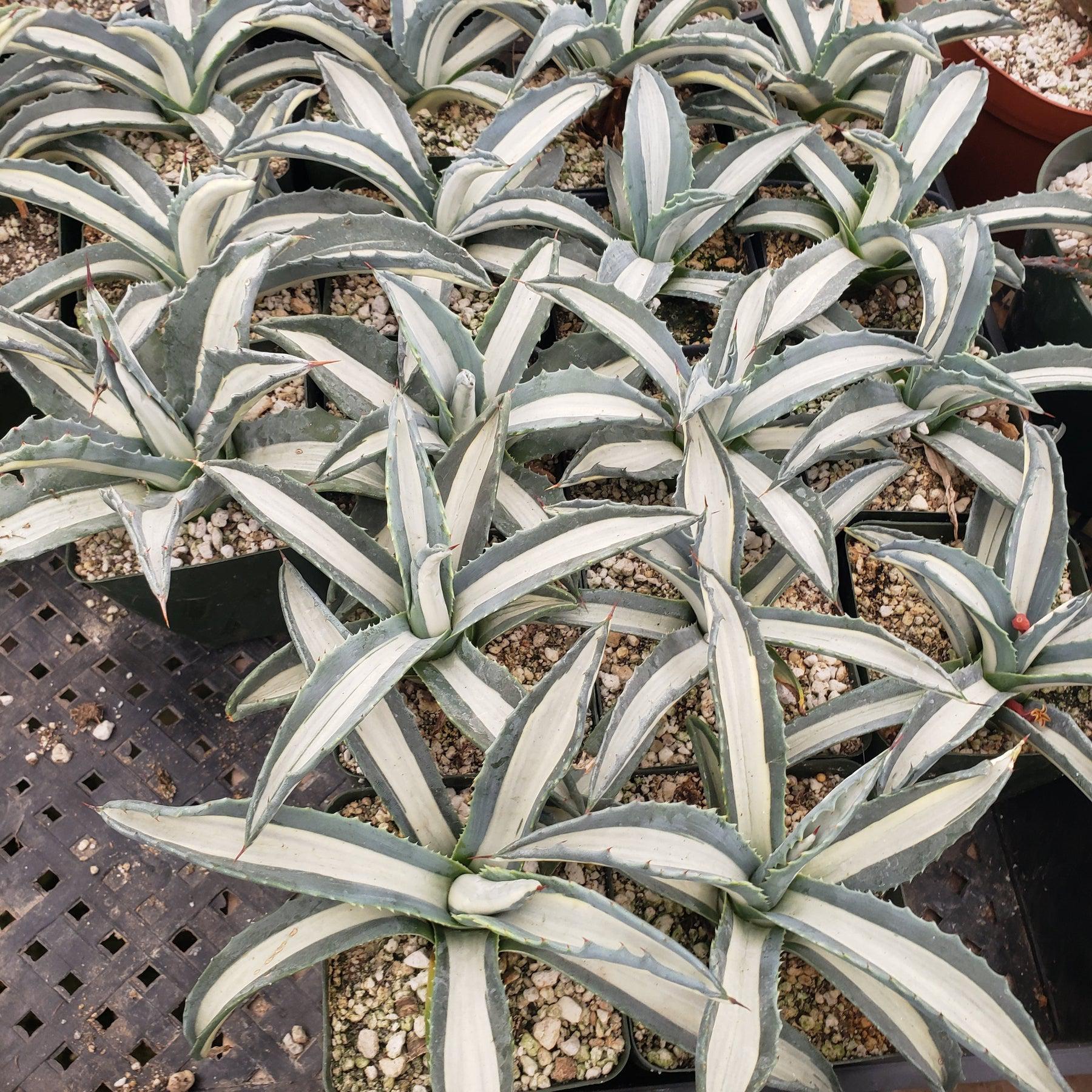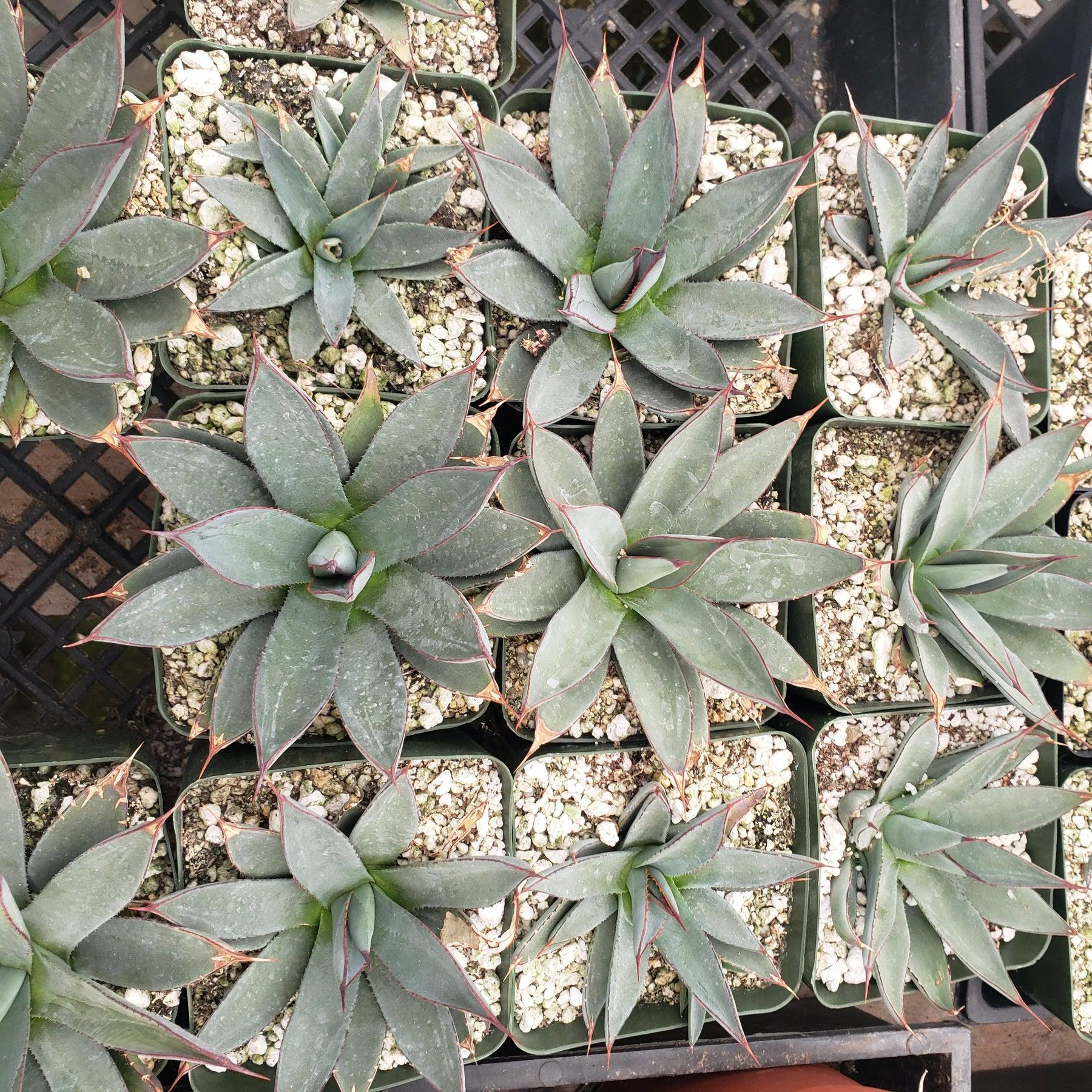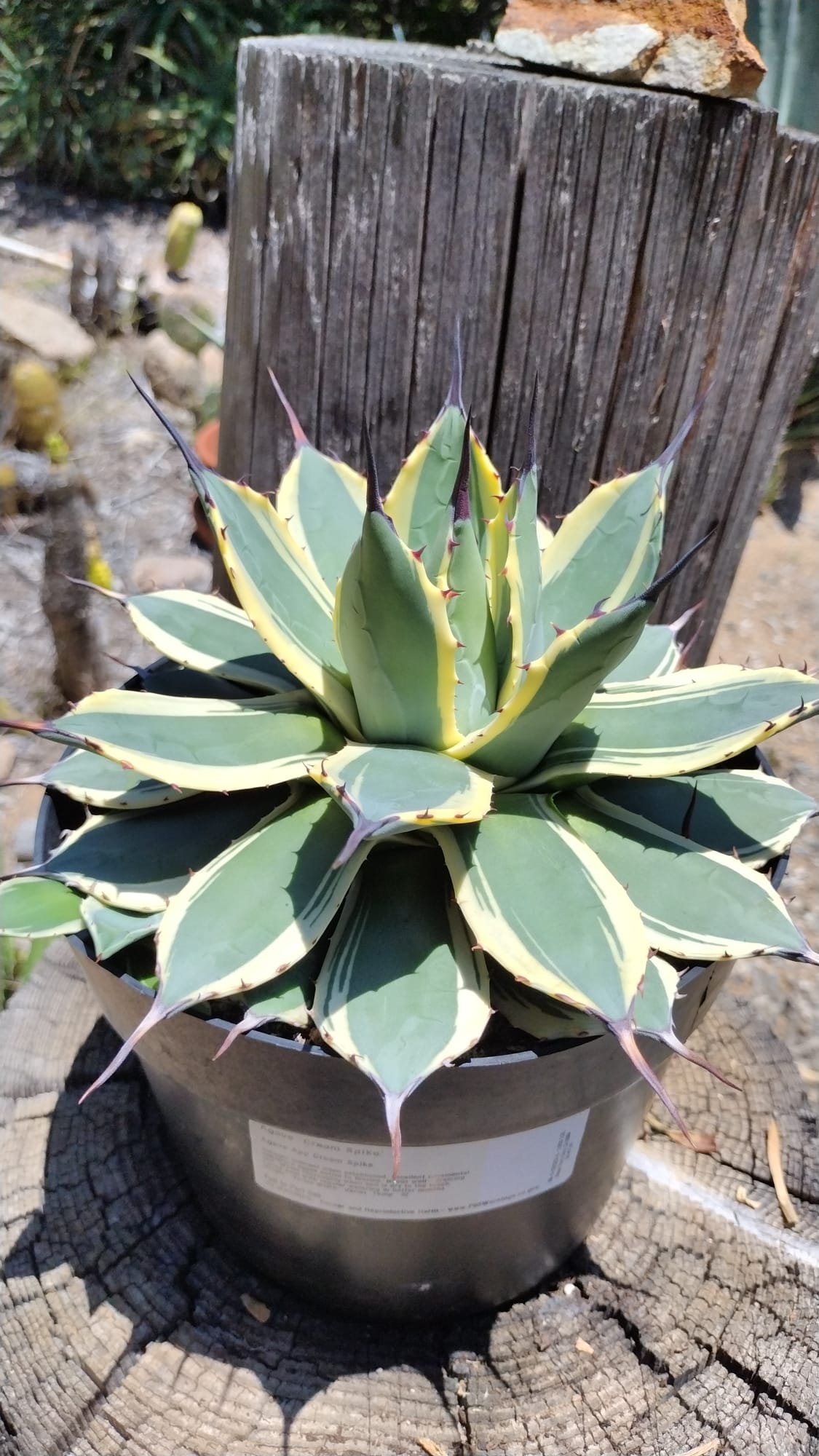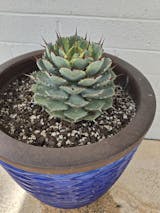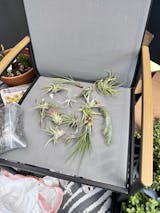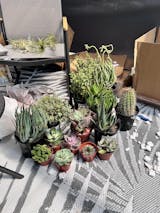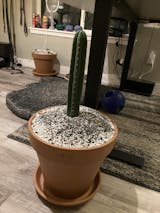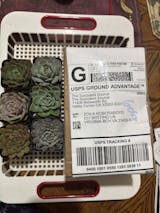Please Read: Agaves are simply AWESOME!
Jude, our thirteen year old does the majority of all the work, and Jude gets all the money after paying for shipping costs!
Direct and intense sun/heat can bring out color hues that full shade does not. Aloe/agave colors can vary based on time of the year, temps, sunlight, watering etc.
Agave tips get bent/broken, especially on the older outside edges naturally in life. As Agaves grow, you'll often trim/cut the older branches/leaves to clean up their appearance and this also allows them to fit better in containers and allows room for new pups to grow and pop out! See pics below. We often cut the tips off our decorative ones in the yard to keep our kid legs and dog noses safe. Sometimes tips get bent or broken during shipping regardless of how well we pack. We will not refund you or ship out a new Agave simply because some tips are not perfect.
We do guarantee the Agaves to be healthy, and any blemishes will be outgrown in their future growth assuming they are happy in their new conditions!
Please see our Blogs on propagating and proper care Aloes and Agaves.
Individual cuttings and seeds are often available throughout the year. Cuttings will need to be potted and given 3-4 weeks approx. to begin rooting(some may already have roots), please see our Care page on rooting.
Drought tolerant when established. Protect from freezing temps. Not all Agaves and Aloes like full sun, experiment with your location to see where they look their best. Protect from freezing temps.
***Agaves have sharp tips and edges, always handle with gloves and open box carefully with gloves!
PLEASE see Judes' Aloe page for lots of unique and interesting Aloe options!!
Here’s some basic Agave info
Agave – Linnaeus (1753)
Greek:
agauos = of kings and heros, illustrious, hence noble
Over 300 species of
Agave have been described, but only about 200 are currently recognized. Most species are monocarpic, although a few can flower several times during their life. The flowers are “perfect” with both male and female parts. Many species of
Agave are bat pollinated and produce musky perfumes as attractants. Others produce sweeter odors to attract insects.
Most Agaves consist of rosettes of thick, hard, rigid but succulent leaves often with marginal teeth and usually with a lethally sharp terminal spine. Prolific vegetative growth and offsetting at the base of the plant or through stolons, usually maintains a clump of plants thus compensating for loss of flowering rosettes. A few species remain solitary, relying on seed production for survival of the species.
The interior of the leaves contains longitudinal fibers representing the vascular system. Agave leaf fiber was used by native Americans. Agave fiber from a range of species is of commercial importance, with the best quality fiber coming from the youngest leaves. Sisal (hemp) made from cultivated Agave sisalana is used to make clothing and rugs.
Carbohydrates stored in the core of several species of
Agave were fermented by native Americans to make a beverage called pulque which was used in religious ceremonies. Distillation of a similar ferment made from the developing
Agave flower bud is the basis for modern production of Mezcal. Only if made from the Blue
Agave within Tequila, Mexico can the distillate be called Tequila.

